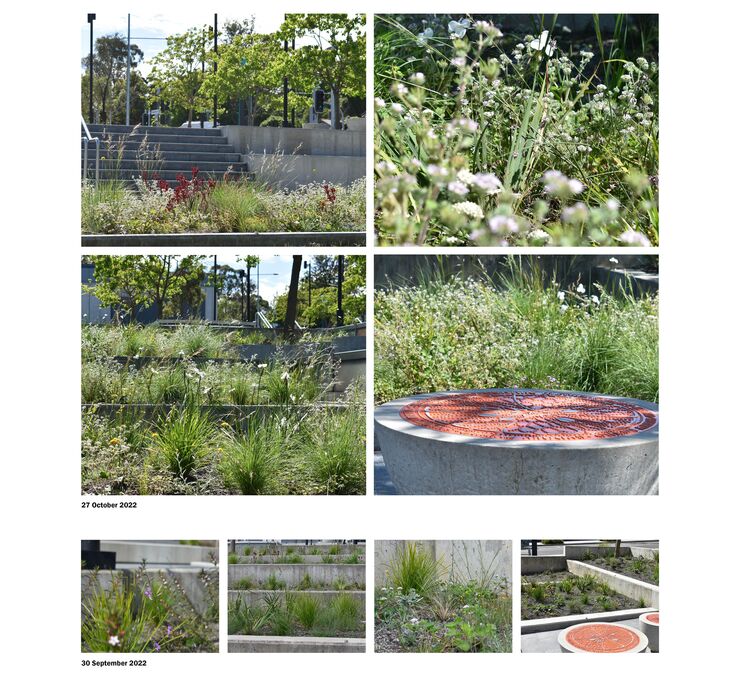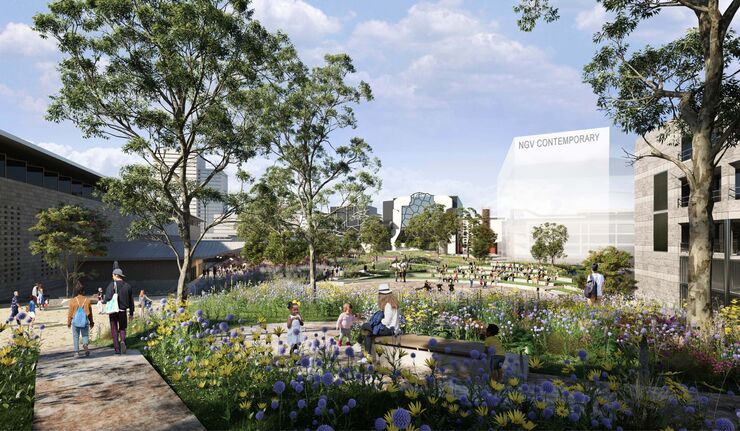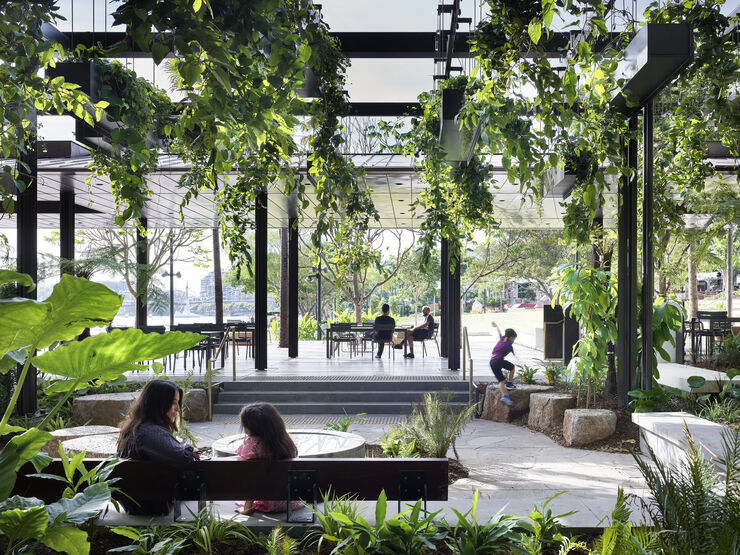Seeds of change: exploring the digital frontier of planting design
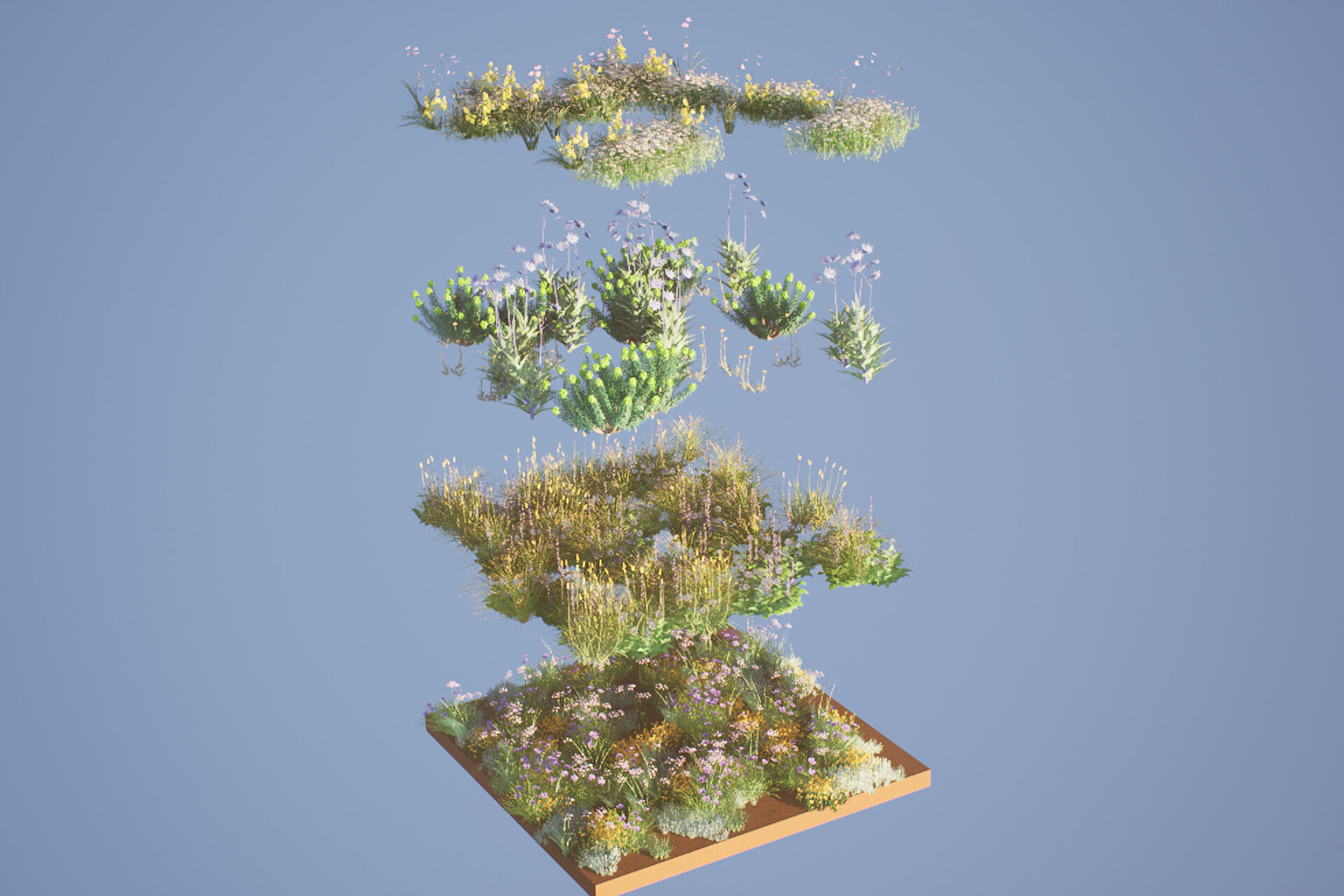
New tools are popping up that explore the potential of planting design in the digital space. What does this mean for practice, and how do we stay grounded?
By Michael G. White, Associate at Hassell
Planting is increasingly being recognised as a critical layer of our urban environment, one that contributes to mental and physical health, urban cooling, resilience and biodiversity. For designers, vegetation presents unique challenges in the curation of a complex natural system that changes over time. Despite recognition of the importance of urban vegetation, there has been a delayed development of technology and digital tools for planting design. This creates a challenge and an opportunity for those who are prepared to engage with available data and technologies.
Design methods are evolving as projects become increasingly complex and integrated, with multi-disciplinary teams working in a shared virtual space. How can we reimagine the processes of planting design in this context? This may mean moving away from the fixed plan and taking an adaptive approach that connects parametrically to microclimate data, updating in response to each new revision of a BIM model. Below we look at a series of digital experiments in planting design, from defining layouts with parametric tools to capturing learnings from real world planting trials using spatial data.
TOOLS FOR TENDING VIRTUAL GARDENS
Currently, a wide variety of tools and techniques are being used across landscape architecture practices, from 2D CAD to complex environmental simulations and BIM models. The development of digital tools specifically for landscape architects is critical to advancing the goals of the profession and meeting the challenges of the future. While recent developments are encouraging, the design of complex planting schemes in the built environment remains a specialisation within a small discipline. With relatively little investment in the space from large software vendors, many work-arounds, hacks and single-developer plugins are being used by practices to meet their project needs. The following examples are just a snapshot of an industry that is undergoing rapid change.
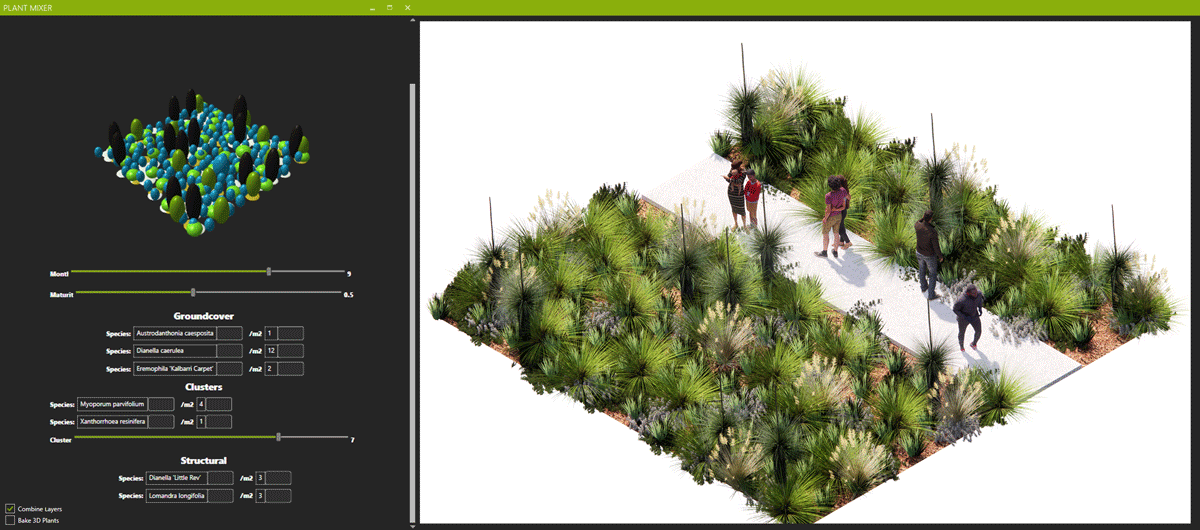
Land Kit, a plugin for the popular Grasshopper and Rhinoceros software, was developed by Chris Landau based on 15 years of working on landscape projects. Land Kit’s planting components use an innovative placement model to select plant species which are most suitable for site-specific conditions. Plant selection is based on the user’s spatial design intent for layout, combined with a layered system of micro-climatic analysis. These tools have been used on a range of projects under development to adapt planting schemes to soil and moisture conditions on site.
At Hassell, we have been exploring the possibilities of digital planting design through various design experiments and project work. The PlantMixer app enables users to define planting mixes using parametric rules to describe the arrangement of plants in space. Linked to a digital library of plant characteristics and 3D models, tools like this can enable quick visualization and exploration of planting palettes.
The expression of seasonality and change over time is an ongoing challenge for landscape architects. In projects involving large-scale public plantings such as The Melbourne Arts Precinct Transformation it can be challenging to communicate the growth and change of vegetation over time. A simulation model developed by Hassell for the project in Unreal Engine allows users to showcase the immersive experience of being within a dynamic seasonal landscape throughout the year in a real-time interactive model. This technology, developed for the video game and film industry, allows for highly detailed animated scenes, 3D walkthroughs and virtual reality presentations.
CONNECTING TO PLANTS ON SITE WITH SPATIAL DATA
While digital tools can be powerful tools for visualization and communication, connecting to and visiting sites in the real world is critical to understand the changing patterns of plants over time. The collection of spatial data can be used to inform new projects, building up a body of knowledge and revisiting past sites to observe how they have changed over time.
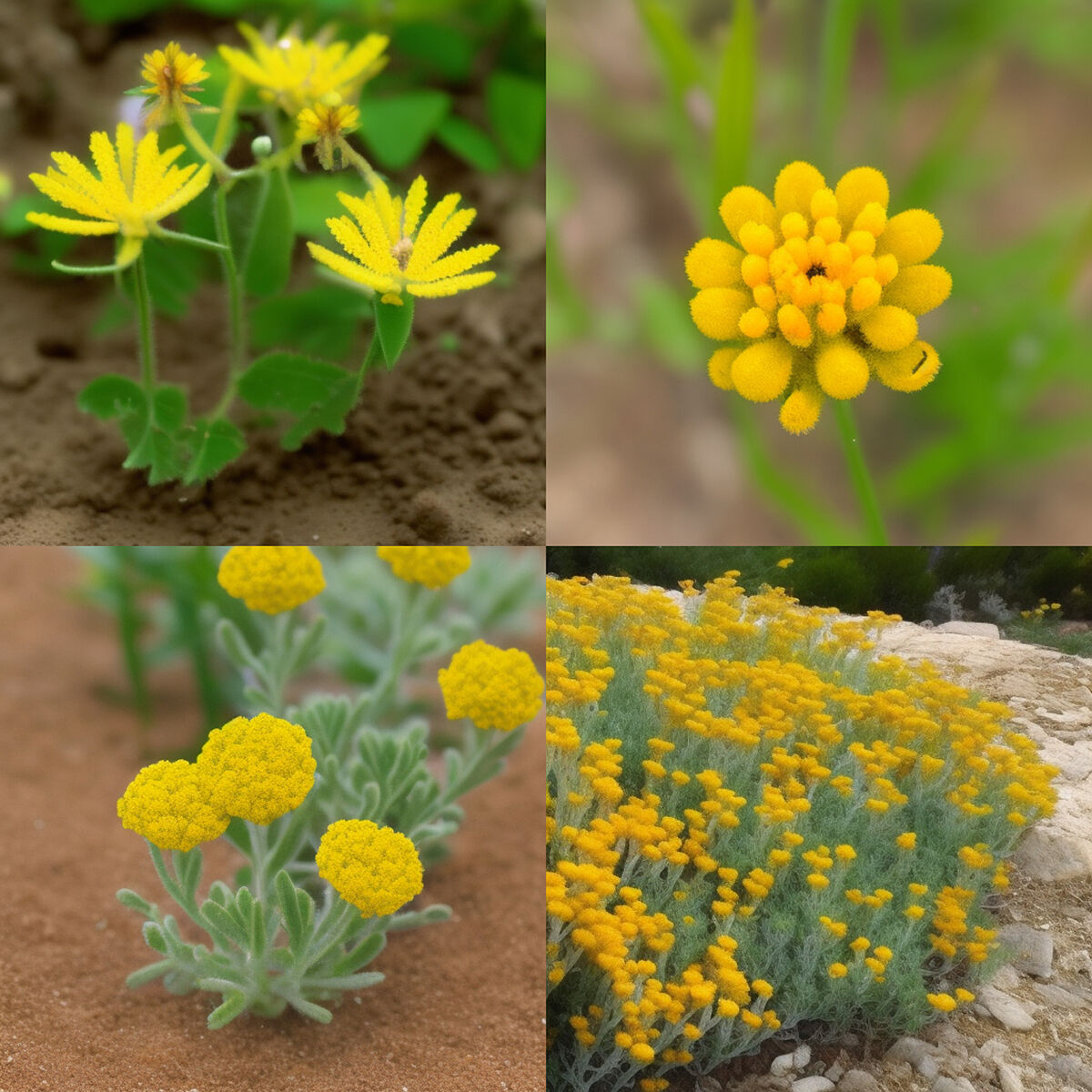
A recent collaboration between Sydney Metro, Hassell and The University of Melbourne resulted in an urban planting trial at the Showground Metro Station in Castle Hill, Sydney that explores complex and diverse native planting mixes in a low-maintenance public environment. A point cloud scanning process has been used to track progress and growth over a period of 12 months. A scan is taken once every three months to provide a record of a point in time in the life of the trials. Photogrammetry software Reality Capture was used to turn the photographs into a three-dimensional, full colour capture of planting beds. These scans can be used to measure vegetation cover, track where species have survived or spread over time and even visit the past in virtual reality to interrogate how the site has developed.
Such tools open up a new role for landscape architects, allowing them to engage as ongoing stewards of a digital site archive. Complex spatial data allows us to capture a point in time more effectively than any number of static images. Machine learning techniques can be used to measure growth and vegetation cover and analyze how these may be linked to underlying conditions on site. AI models can be trained to identify individual species, highlight invasive weeds and evaluate plant health. In the future, the increased availability of aerial and LIDAR (light detecting and ranging) data will create even more opportunities for landscape architects to measure and learn from site after installation.
AI AND PLANTING DESIGN
The rapid rise of generative AI tools has been felt across every industry. Image and text generation can be powerful tools for conceptual explorations. These tools can be time-savers but unless they are grounded in well-labelled and robust datasets, ideally from local sources, they cannot provide reliable information.
Generative imagery includes imagined plant species that have never existed outside digital space, and text output may hallucinate or falsify data on tolerances where it is not available. Training new systems on well-defined and validated datasets and annotated imagery will lead to more accurate results. At present, there are no available models trained specifically with the institutional knowledge of landscape architecture – but there will be. The unthinking use of generative tools may lead away from an evidence-based process, and the ability to critically evaluate generated outputs for quality and accuracy requires a deep knowledge of the medium.
STAYING GROUNDED
In the age of AI, developing the fundamental skills of planting design is still critical. It is impossible to adequately engage with planting design from behind a screen, without an understanding of growth, maintenance and change over time. Designers also need to be good communicators in order to be part of the conversation – and communicating will always include representing designs in 3D and coordinating projects in the digital space.
In the future, new tools may transform the design industry further, but at present, issues with the reliability and sourcing of data is still proving challenging. In practice, it is vital to be able to validate and trace decision-making. Opportunities lie in creating holistic approaches, in which the construction and management stages of projects can feed back into a building a continually growing knowledge pool around plant-growth processes, as well as improved outcomes on site.
This feature first appeared in the February 2024 ‘Reframing Innovation’ issue of Landscape Architecture Australia

Scan this QR code with your phone to follow Hassell on WeChat.
